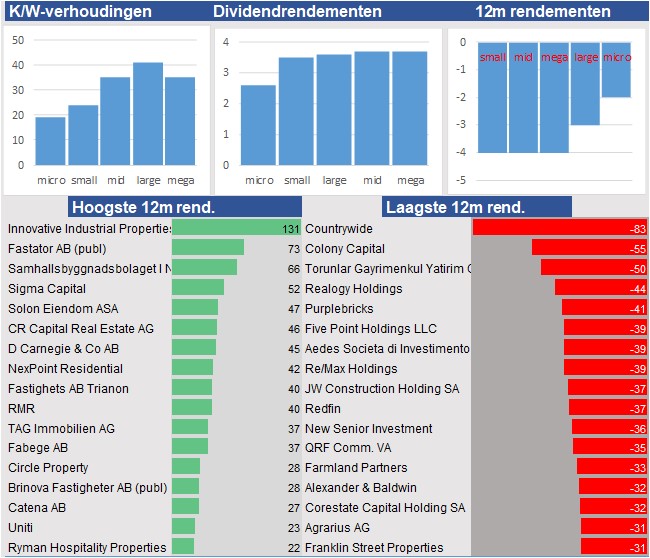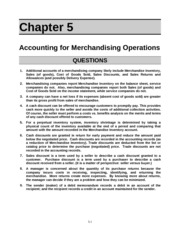The cost of goods sold is separated from the operating expenses and listed in the gross margin section. This is particularly important because it gives investors, creditors, and management the ability to analyze the financial statement sales and purchasing efficiency. The non-operating and other section lists all business revenues and expenses that don’t relate to the business’ principle activities.
Nonoperating revenues and expenses appear at the bottom of the income statement because they are less significant in assessing the profitability of the business. A multi-step income statement includes much of the information found in a single-step format, but it makes use of multiple equations to determine the profit, or net income, of a business. Multi-step income statements break down operating expenses and operating revenues versus non-operating expenses and revenues. This process separates expenses and revenues directly related to the business’s operations from those not directly related to its operations. The multi-step income statement includes multiple subtotals within the income statement.
Services
The summary of closed revenue and expense accounts are added into the equity section of a balance sheet, as the owner’s capital or retained earnings. The line items could be misleading if management tries to move expenses from cost of goods sold into operating expenses. The amount of detail provided in multi-step formats can be a drawback as it’s a time-consuming and more complex way of preparing an income statement compared to using a single-step format.

A cash flow statement will include payouts like loan premiums, credit card bills, and owner’s draw. Whereas your P&L only shows the revenue streams and expenses that directly affected your profit. The multi-step (short for multiple-step) income statement is the counterpart to the single-step income statement and is used by a business to report its earnings or losses for a reporting period. It is called the multi-step because of the multiple steps taken to arrive at the net income amount. The last stop for knowing how to prepare a multi step income statement is calculating the total net income.
Step 5: Calculate Income before Taxes
That means keeping track of sales revenues and expenses doesn’t require a complex financial statement. The top portion of the multi-step income statement is someone’s overall operational operations. To begin, add the operating revenues and the sales proceeds from selling the goods or services. A multiple-step income statement Multi step income statement presents two important subtotals before arriving at a company’s net income. For a company that sells goods (merchandise, products) the first subtotal is the amount of gross profit. Businesses that are looking to raise funds from investors and creditors are likely to use multi-step income statements as well.
- Patrick Curtis is a member of WSO Editorial Board which helps ensure the accuracy of content across top articles on Wall Street Oasis.
- The final step in creating a multi-step income statement is calculating net income.
- In any case, GAAP gives companies the option of issuing either single-step or multiple-step income statements, depending on how they’re structured.
- This layout makes it easier for readers to aggregate selected types of information within the report, especially in regard to the core operations of a business.
They also calculate net income, reaching the same result, although by different processes. Bookkeeping for the one-step approach is simple, reducing the work an external accountant does to prepare the income statement. Some small business owners prepare their own income statements, skipping the time and cost of accountants and bookkeepers. A single-step format is a quick rundown of a business’s activity, almost a back-of-the-envelope calculation. Income and expenses aren’t sorted by whether they’re an operating expense or non-operating expense, and operating expenses aren’t sorted by production costs or overhead.
Ask a Financial Professional Any Question
The classified income statement subdivides operating expenses into selling and administrative expenses. Thus, statement users can see how much expense is incurred in selling the product and how much in administering the business. Statement users can also make comparisons with other years’ data for the same business and with other businesses.
In comparison, indirect costs are generalized costs that are expended for the company. Harold Averkamp (CPA, MBA) has worked as a university accounting instructor, accountant, and consultant for more than 25 years. We serve content to help young professionals develop personally, professionally, and financially. As such, this website will cover a variety of topics aimed to help you have a successful life and career. Keep an eye out in the financial footnotes of the statement and annual report, as any change like this would be disclosed there. While detail can be beneficial, there’s a risk of getting bogged down in the minutiae.
Ask Any Financial Question
One of the top three financial statements, the income statement measures company performance. Also known as a profit and loss statement, the income statement provides an overview of revenues and expenses incurred during a specific period of time. Its structure distinguishes between operational revenue and operating costs and non-operating income and expenses. Multi-step income statements are one of the two ways firms may declare their earnings.
The Multi-Step Income Statement offers a nuanced view of a company’s financial performance by breaking down revenues and expenses into multiple categories. The final step in creating a multi-step income statement is calculating net income. Add the final calculation as a line item at the bottom of your operating activities section, titled Net Operating Income or Income from Operations. Next, add your total operating expenses to the operating activities section. This would include cost of goods sold, as well as costs such as advertising expenses, salaries and administrative expenses, including office supplies and rent.
Income Statement vs P&L Statement
Unlike a single-step format, multi-step formats don’t only focus on net income but offer an additional level of detail by calculating two more income-related figures. Gross Profit represents the difference between sales and the cost of goods sold (COGS). It provides insights into a company’s core operations, excluding other operational expenses. Before you begin, ensure you have all the relevant financial data from the period in question. This includes sales figures, expense receipts, records of any asset sales, and so on.
When you are trying to ask for money, any smart creditor or investors will want to see how your business is operating. This includes the costs of goods sold, advertising expenses, administrative expenses, and employee salaries. Administrative expenses include things such as rent and office equipment and supplies. A multi-step income statement is a financial statement that presents a company’s revenue, expenses, and net income in a more detailed and comprehensive manner than a single-step income statement. The main purpose of preparing a multi-step income statement is to provide insights into a company’s overall financial performance.
The multi-step format lists components like revenue, cost of goods sold, operating expenses, interest, and taxes in distinct sections. The multi-step income statement shows important relationships that help in analyzing how well the company is performing. For example, by deducting COGS from operating revenues, you can determine by what amount sales revenues exceed the COGS. If this margin, called gross margin, is lower than desired, a company may need to increase its selling prices and/or decrease its COGS.
Single-Step vs. Multiple-Step Income Statements: What’s the … – Investopedia
Single-Step vs. Multiple-Step Income Statements: What’s the ….
Posted: Sat, 25 Mar 2017 15:29:00 GMT [source]
Multi-level income statements are also often produced in compliance with some laws and regulations. By adding the operating income and non-operating income, you should be able to compute the company’s bottom line after deducting the income tax expense. The header of your multi-step income statement conveys important information to readers. It states the name of your company, it identifies the document as an income statement and it defines the reporting period covered by the document.

They should keep a multi-step income statement to get a clear difference between the primary and non-primary business activities. However, the multi-step approach can still yield misleading results if management alters where expenses are recorded in the statement. For example, an expense may be shifted out of the cost of goods sold area and into the operating expenses area, resulting in a presumed improvement in the gross margin.
